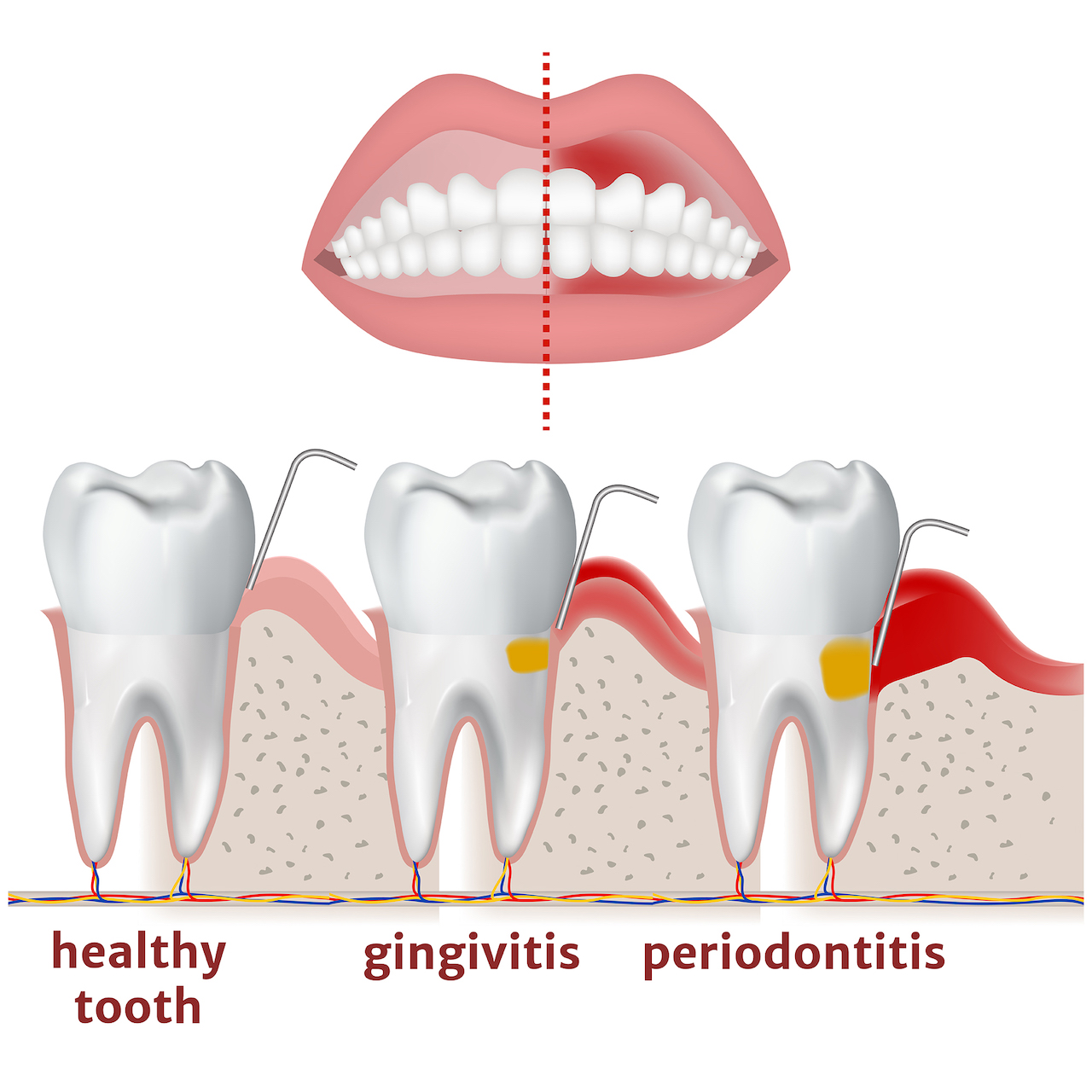The Difference between Periodontitis and Gingivitis

Understanding the difference between periodontitis and gingivitis is crucial for effective oral health management.
Early recognition allows for a timely intervention. In some cases, gingivitis is completely reversible.
Preventing its progression is key to avoiding the irreversible stage of periodontitis.
Gingivitis vs Periodontitis
Scheduling regular checkups with your dentist is one of the best ways to take care of your teeth and gums.
Common oral health problems include cavities, caused by tooth decay, and gum disease, characterized by inflammation and potential tooth loss.
Gingivitis
The two phases of gum disease—gingivitis and periodontitis—are very different from one another and have varying effects on the mouth and teeth.
In the beginning, there's gingivitis, which mostly affects the gums. It's a mostly reversible condition characterized by inflammation of the gum tissue surrounding the teeth.
Gums that are red, swollen and painful are symptoms of gingivitis in its early stages.
Also, when you're brushing or flossing, you might notice bleeding gums. The bleeding occurs as a result of plaque, a sticky bacterial film that builds up on teeth.
The good news is that better dental hygiene habits can help with gingivitis.
To remove plaque and stop it from becoming gum disease, it's important to brush your teeth regularly, floss thoroughly and have your teeth regularly cleaned by your dentist.
Periodontitis
Periodontitis is a more serious form of gum disease. Untreated gingivitis may progress to this condition.
The disease starts in the gums and spreads to the bone, which holds the teeth in place. Treatment for periodontitis may control and reduce its growth, but it is not completely reversible, like gingivitis.
When gum disease progresses to periodontitis, pockets may develop between the gums and teeth, and the inflammation is much worse. These crevices serve as breeding grounds for germs and other infectious materials.
The immune system's reaction to the infection and the bacteria's toxins may gradually weaken the jawbone and the connective tissue that holds the teeth in place.
Other symptoms of periodontitis include persistent foul breath, altered space between teeth and even tooth movement. In advanced cases, tooth loss may occur.

How does Gingivitis Progress to Periodontitis?
The transition from gingivitis to periodontitis is not universal. This is because not everyone with gingivitis will develop the more severe form of gum disease.
Several factors contribute to the progression of gingivitis to periodontitis.
Poor Oral Hygiene: Inconsistent or inadequate oral hygiene practices, including infrequent brushing and flossing, can lead to the accumulation of plaque. This increases the risk of gum disease progression.
Smoking and Tobacco Use: Smoking and tobacco use weaken the immune system and hinder the healing process. This makes the gums more susceptible to infection.
Genetic Factors: Some individuals may be genetically more prone to severe forms of periodontitis, even with diligent oral care.
Medical Conditions: Certain medical conditions, such as diabetes and autoimmune disorders, can compromise the body's ability to fight infections. This increases the risk of gum disease.
Poor Nutrition: A diet lacking essential nutrients, particularly vitamin C, can contribute to weakened gums. This hinders the body's ability to combat infections.
Conclusion
Noble Dental Care understands the complex differences between periodontitis and gingivitis. We tailor our treatment methods according to each patient's progression.
Our early intervention services preserve your gum health, reduce the risk of tooth loss and ensure optimal oral health.